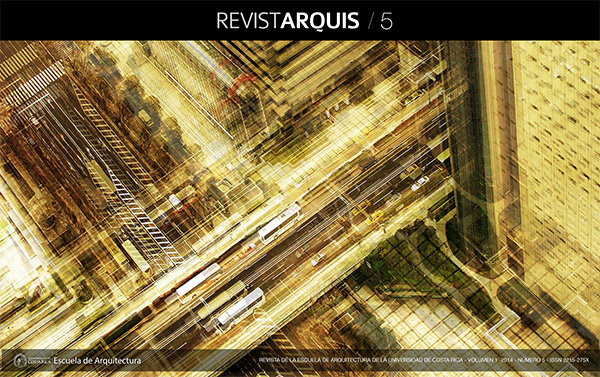Abstract
Abstract
The field of architecture continues to find itself in deeper and deeper discourse with other disciplines, yet these relationships continue to be blurry and uncertain. Using the framework of corporeality established by Walter Benjamin in his 1936 text, The Work of Art in the Age of Mechanical Reproduction, this study will consider the tenuous intersection of the author of a work, the experience of that work and the tools that are used to bring the work into being, within the mediums of architecture and film. Additionally, this study will discuss the emphasis such a juncture places on the expressions of space and time, both critical factors in the experience of reality. To establish a backdrop for this discussion, a comparison of the two fields will be laid out and traditional limits of both disciplines will be considered. Jumping off from this comparison specific architectural and filmic works will be discussed that directly challenge traditional models of production and consumption. Explorations of projects such as Diller + Scofidio (+Renfro)’s built work Blur (2002) and Abbas Kiarostami’s film Taste of Cherry (1997), will highlight specific methodologies for questioning the blurred zones beyond disciplinary practice – the space and time between. These works offer insight into these regions beyond traditional discourse, exposing new potentialities for exploration and models for disciplinary intersection.
Resumen
El campo de la arquitectura se encuentra en un proceso de discurso cada vez más profundo con otras disciplinas, pero estas relaciones son ambiguas e inciertas. Usando el marco de corporalidad establecido por Walter Benjamin en su texto de 1936, The Work of Art in the Age of Mechanical Reproduction, este artículo estudiará la intersección tenue entre el autor de una obra, la experiencia de la obra y las herramientas utilizadas en su creación, en los medios de la arquitectura y el cine. Adicionalmente, se analizará el énfasis que tal intersección impone sobre las expresiones de espacio y tiempo, ambos factores críticos para la experiencia de la realidad. Para establecer un telón de fondo para esta discusión, se hará una comparación entre los dos campos y se considerarán los límites tradicionales de ambas disciplinas. Con base en esta comparación, se discutirán obras específicas de arquitectura y cine que desafían los modelos tradicionales de producción y consumo. Exploraciones de proyectos como la obra construida Blur, de Diller + Scofidio (+Renfro) (2002) y la película de Abbas Kiarostami’s Taste of Cherry(1997), enfatizarán metodologías específicas para cuetionar las zonas borrosas y ambiguas entre la práctica disciplinaria, el espacio y el tiempo. Estas obras ofrecen hallazgos que van más allá del discurso tradicional, exponiendo nuevas potencialidades para exploración y modelos para la intersección disciplinaria.

